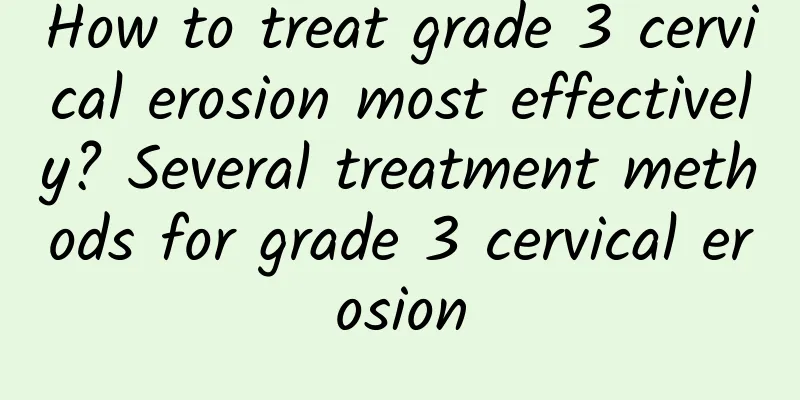Diagnostic principles for oligomenorrhea in patients with irregular menstruation

|
If the menstrual bleeding volume of patients with irregular menstruation is less than 20 ml, it is considered as oligomenorrhea, which is related to endocrine factors, such as ovarian insufficiency, low estrogen level, hyperprolactinemia or certain endocrine diseases. In addition, congenital uterine hypoplasia, endometrial estrogen receptor deficiency, endometrial tuberculosis, drug effects, etc. can also lead to oligomenorrhea. The following principles should be noted in the diagnosis of oligomenorrhea in patients with irregular menstruation: Pay attention to medical history to obtain basic information Carefully inquire about the patient's medical history, including past menstrual history, menopausal history, reproductive history, abortion history, chronic disease history, etc. Also inquire about whether the patient has a history of taking medications that affect menstruation and a history of gynecological diseases. Gynecological examination to rule out uterine abnormalities 1. Check the internal and external genitalia for any abnormalities. The ovaries of patients with polycystic ovary syndrome are slightly enlarged on both sides. The ovaries of patients with endometriosis are enlarged on one or both sides, which are cystic and adhere to the uterus, and nodules can be felt in the isthmus of the uterus. 2. Perform vaginal B-ultrasound to check the thickness of the endometrium 7 days after the basal body temperature rises or 7 days before the menstrual period to determine whether the endometrium is hypoplastic. At this time, the thickness of a normal endometrium single layer is about 0.5-0.8cm. 3. Blood endocrine examination is of reference value for diagnosing polycystic ovary syndrome, premature ovarian failure, anovulatory functional uterine bleeding, etc. Basal body temperature and hormone levels Measure basal body temperature to get a preliminary understanding of ovarian function; check sex hormones and thyroid stimulating hormone on the 2nd to 5th day of menstruation to rule out causes of oligomenorrhea such as ovarian insufficiency, hyperprolactinemia, or abnormal thyroid function. Measure thyroid function if necessary. Hysteroscopy if necessary Patients suspected of having intrauterine adhesions should undergo hysteroscopy. If there are intrauterine adhesions, the adhesions should be broken down during hysteroscopy. |
<<: Characteristics of the pathogens of Gardnerella vaginitis
>>: Several types of women who are prone to ectopic pregnancy
Recommend
How to treat premenstrual migraines?
How to treat premenstrual migraines? Premenstrual...
Analysis of methods to prevent irregular menstruation
Irregular menstruation is a problem faced by many...
The most common complications of pelvic inflammatory disease
There will be a lot of inflammation in the pelvic...
What are the most effective common sense to fight vaginitis?
Vaginitis is of course a common gynecological dis...
What to do if miscarriage causes irregular menstruation
What should I do if miscarriage causes irregular ...
Iron deficiency anemia causes cold hands and feet, dizziness, and fatigue! Nutritionist: The number one fruit for iron supplementation is...
If you often experience symptoms such as cold han...
The best time to sweat during abortion
There is no need to sweat after a miscarriage. Th...
2 water bottle weight loss exercises to quickly get rid of body fat
What exactly is the "Water Bottle Diet Exerc...
What to do with irregular menstruation
What should women do if they have irregular menst...
Can't resist the temptation of sweets? Nutritionists teach you 8 ways to reduce sugar intake
Everyone knows that fat comes from the mouth, but...
How can we prevent cervical erosion in daily life?
The key to preventing cervical erosion is to pay ...
Specific manifestations of Trichomonas vaginitis
Vaginitis is a disease that most women will suffe...
How does Gongjingyankang suppository treat cervical erosion? Methods of traditional Chinese medicine to treat cervical erosion
Cervical erosion is a common disease among women....
Comprehensive exposure to the dangers of threatened abortion
Many female friends will have many problems durin...
What tests should be done for cervical warts?
How to check the incubation period of cervical wa...









